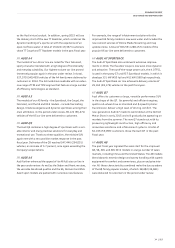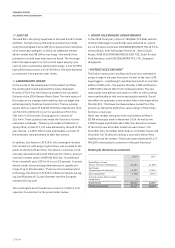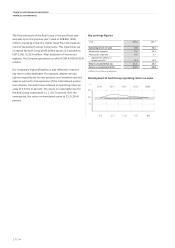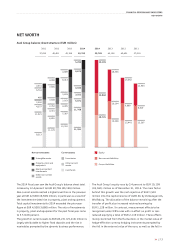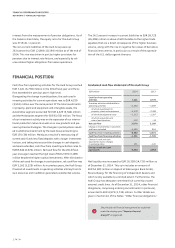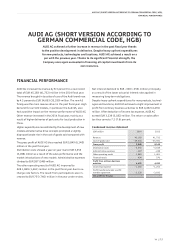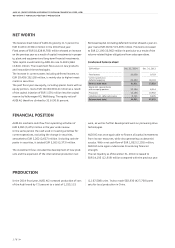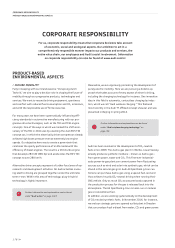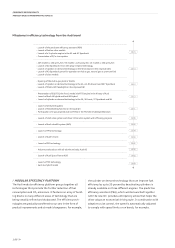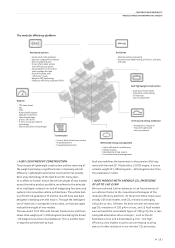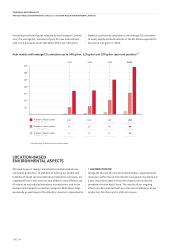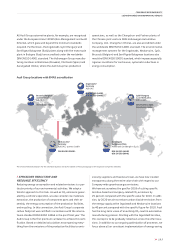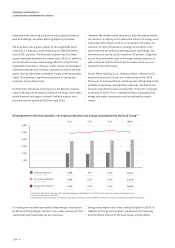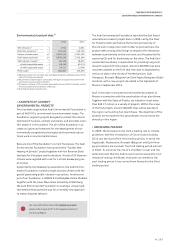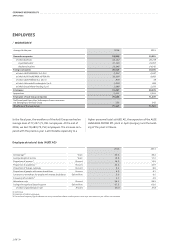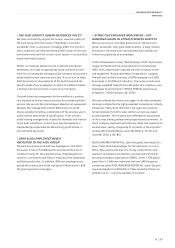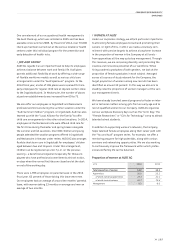Audi 2014 Annual Report Download - page 179
Download and view the complete annual report
Please find page 179 of the 2014 Audi annual report below. You can navigate through the pages in the report by either clicking on the pages listed below, or by using the keyword search tool below to find specific information within the annual report.
CORPORATE RESPONSIBILITY
PRODUCT-BASED ENVIRONMENTAL ASPECTS
>>
179
The carbon dioxide is extracted directly from the ambient air
using direct air capturing, a technology developed by our Swiss
partner.
Audi is also conducting joint research into the synthesis of Audi
e-gasoline together with a French company. One of our latest
research projects, for which we have teamed up with a U.S.
partner, involves the production of the synthetic fuels Audi
e-diesel and Audi e-ethanol with the help of microorganisms.
/
LIFE-CYCLE ASSESSMENTS
In striving for a fuller assessment of environmental impact, it
is vitally important for us to consider the entire value chain of
mobility, with all products and processes, and not merely the
fuel consumption and CO2 emissions of a vehicle. It is our aim
to reduce the environmental impact of every new model com-
pared with its predecessor. In order to gauge this accurately,
we want to draw up a detailed life-cycle assessment for every
vehicle line. An analysis of the entire life cycle of a car – from
its production, through the phase of use to its recycling – clearly
reveals the impact it has on the environment.
In publishing the life-cycle assessments for the current Audi A6,
the new Audi A3 and the new Audi TT Coupé, we have already
disclosed all ecological aspects and thus demonstrated how
their greenhouse gas emissions have been further reduced. We
will be publishing the life-cycle assessments for the Audi A3
Sportback e-tron and the new Audi Q7 in 2015.
Further information and explanations of the life-cycle
assessments can be found under “Corporate
Responsibility,” “Product responsibility” under
www.audi.com/cr.
/
AUDI TRON
We demonstrate our expertise in the development of alterna-
tive drive concepts through our tron technologies. One such
example is the new A3 Sportback g-tron, which came onto the
market in Germany at the start of 2014. The five-door premi-
um compact car can run on natural gas, conventional fuel or
the climate-friendly Audi e-gas, which is produced at our Audi
e-gas plant in Werlte. Equipped with a 1.4 TFSI engine produc-
ing 81 kW (110 hp), the A3 Sportback g-tron redefines the
benchmark for efficiency and economy. On average, the CNG
vehicle uses less than 3.5 kilograms of natural gas or Audi
e-gas per 100 kilometers.
The new A3 Sportback e-tron also went on sale at the end of
2014. This first Audi model with plug-in hybrid drive combines
the best of two drive principles – a 1.4 TFSI engine developing
110 kW (150 hp), and an electric motor that supplies an out-
put of 75 kW with 330 Nm of torque. The combined system
power is 150 kW (204 hp) and the top speed is 222 km/h. In
purely electric mode, the maximum speed is 130 km/h and the
car’s range is up to 50 kilometers. Overall, the A3 Sportback
e-tron can travel up to 940 kilometers in combined mode and
uses an average of 1.5 liters of premium-grade fuel over the
European standard driving cycle, with average CO2 emissions of
35 g/km.
In 2014, we also demonstrated our expertise in fuel cell tech-
nology in showcasing the Audi A7 Sportback h-tron quattro at
the Los Angeles Auto Show. The test vehicle for new technol-
ogy uses two electric motors, with a fuel cell and a high-
voltage battery as its energy sources. The Audi A7 Sportback
h-tron quattro can travel up to 500 kilometers on a full tank of
hydrogen. In the fuel cell mode, it consumes only around one
kilogram of hydrogen per 100 kilometers. This has the equiva-
lent energy content of 3.7 liters of gasoline. Like a car with a
combustion engine, refueling takes only around three minutes.
The rechargeable lithium-ion battery mounted in the rear with
an energy capacity of 8.8 kWh – a feature borrowed from the
A3 Sportback e-tron – boosts its range by up to 50 kilometers.
The concept car is also designed as an e-quattro, with fully
electronic management of torque distribution. The overall
system power is 170 kW (231 hp) and its top speed is
180 km/h.


